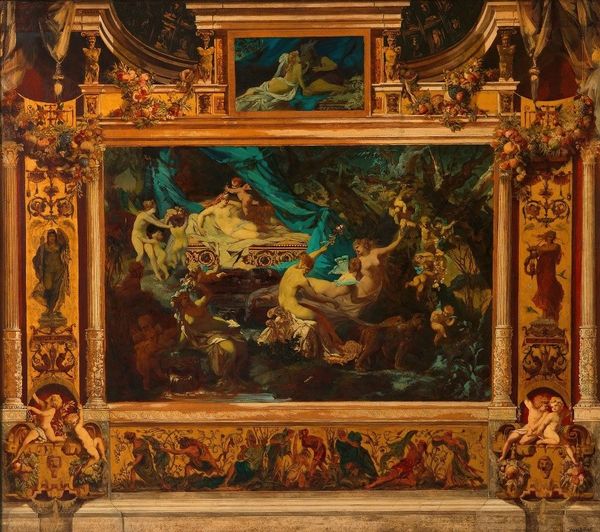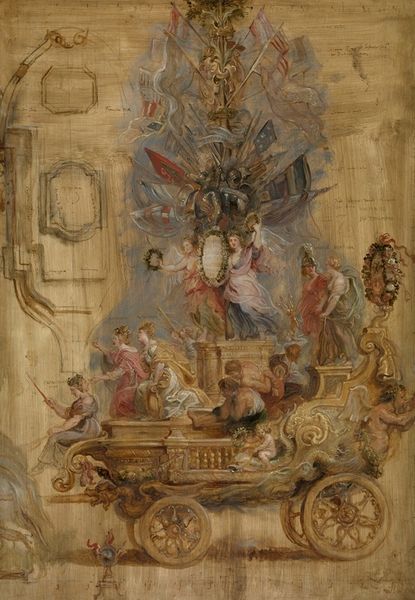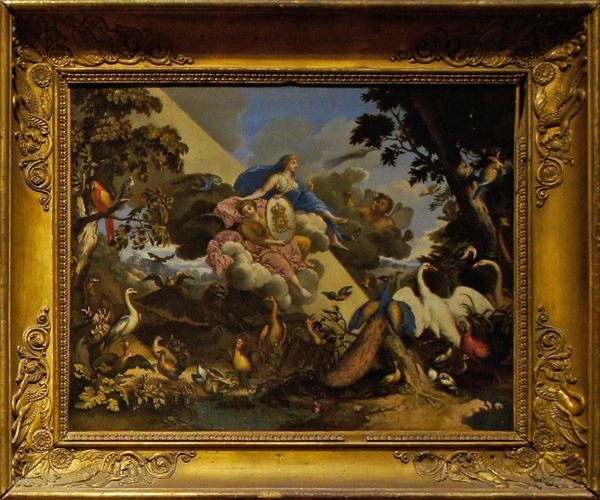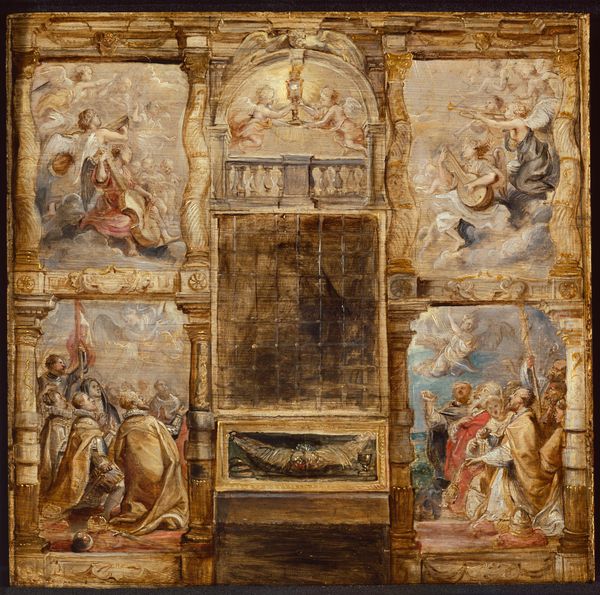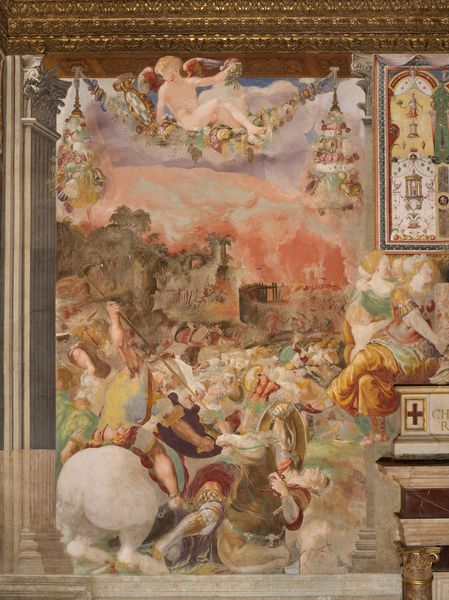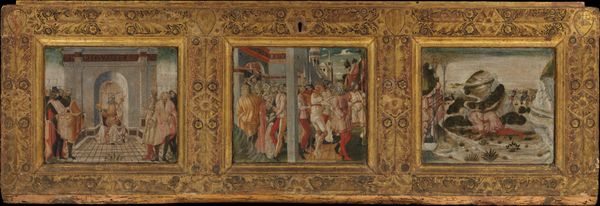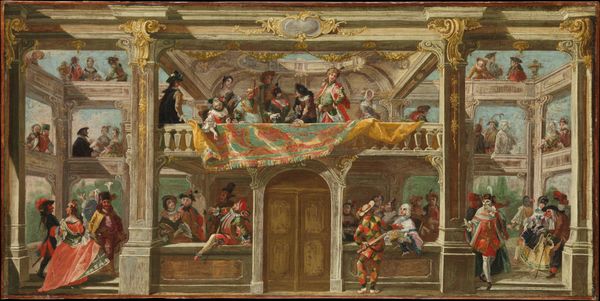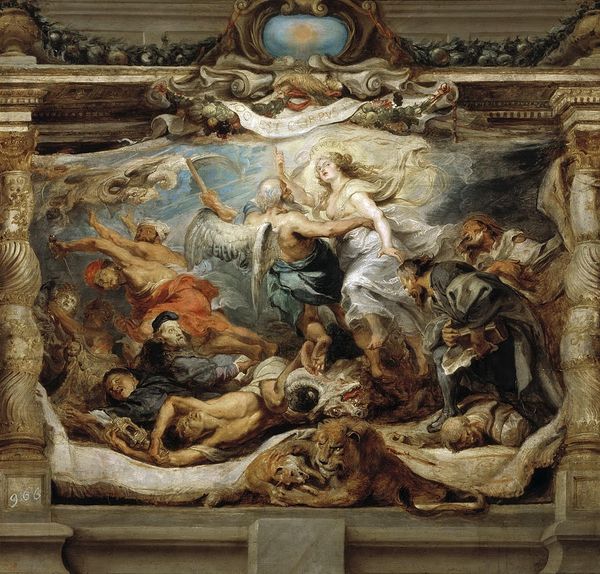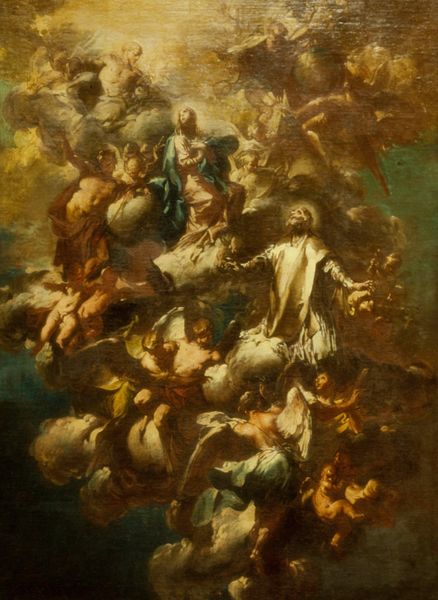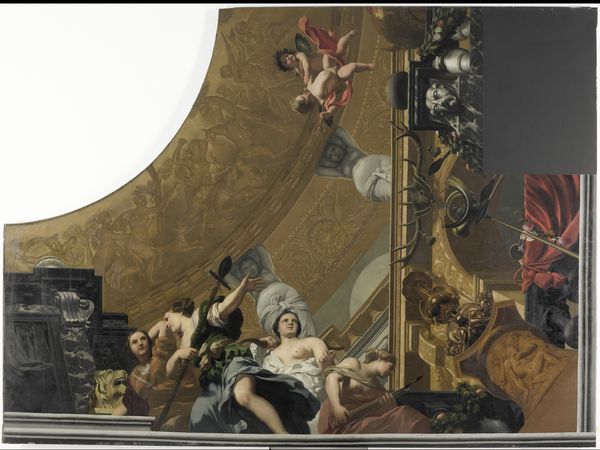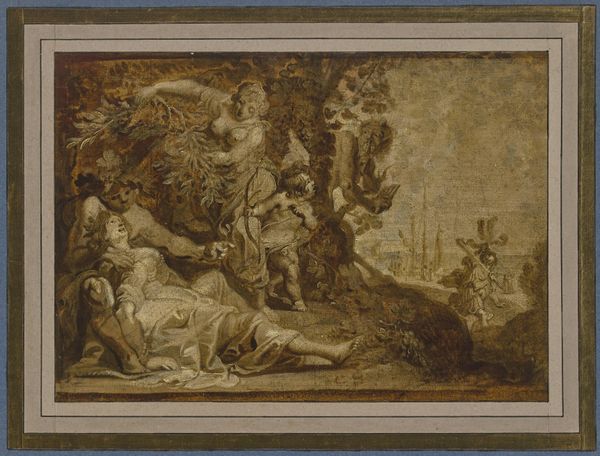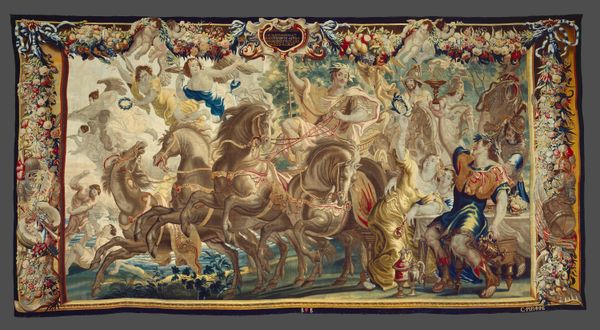
Copyright: Public Domain: Artvee
Editor: So, this is Hans Makart's "Moderne Amoretten," painted in 1868. It’s an oil painting with, what feels like, three separate scenes happening at once. I’m initially struck by the opulence but also the somewhat chaotic composition. What do you see in this piece? Curator: What strikes me is the allegorical approach Makart uses to seemingly critique contemporary Viennese society, masking his commentary through the lens of classical mythology. This wasn’t just decorative fluff. The "amoretti," or cupids, typically symbols of innocent love, appear almost frenzied, participating in these bacchanalian scenes alongside figures from various backgrounds. Editor: That's a great point. I didn’t immediately read the frenzied nature, but I can see that now in their expressions and the overall movement of the painting. How do you connect this back to a social commentary? Curator: Consider the time: Vienna was a city experiencing rapid growth and social change. The old aristocracy was challenged by the rising bourgeoisie, creating new tensions around class and values. Do you see anything in the painting that might relate to those tensions? Editor: Well, I notice a mix of people. Everyone appears equal in the dance or… whatever is going on. But, it does feel performative somehow. Curator: Exactly. The seemingly carefree frolic is underscored by the context of societal shifts, reflecting the artist's questioning of superficiality and moral ambiguity that came with modernization. Perhaps the gold embellishments point to economic changes in Vienna. Do you think that impacts how the piece would have been received by viewers at the time? Editor: It makes total sense! With this social upheaval occurring, Makart may have used allegory to talk about shifting and blurring social lines that might not have been otherwise socially acceptable to address directly. Curator: Precisely! Understanding that relationship helps us decipher the art, connecting it to both historical roots and contemporary interpretations. Editor: This has really deepened my understanding, I initially saw it as ornate, but now recognize so much more, that also asks more questions about history and culture!
Comments
No comments
Be the first to comment and join the conversation on the ultimate creative platform.
